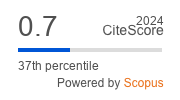Evaluation of the Potential Role of Serum Selenium in Diabetic Patients
Keywords:
Serum Selenium, diabetes mellitusAbstract
Background: The altered status of some essential trace elements observed in diabetes could have deleterious influences on the health of the diabetics. Objectives: To estimate and study the potential role of serum Selenium in type 1, type 2 diabetics and healthy subjects; and its relation with lipid profile and glycemic index. Methods: A case control designed study was carried out at the National Diabetes Center (NDC) / Al-Mustansiria University; on a total of 94 participants formed of 32 type 1 diabetics, 32 type 2 diabetics and 30 healthy control participants. Data collected about age, sex and BMI; also, blood samples examined for FPG, HbA1C, serum total cholesterol, HDL cholesterol, non-HDL cholesterol, serum triglyceride and sera were examined for Selenium by using atomic absorption technique. Results: Type 1 and type 2 diabetic groups show respectively 75% and 65% decrement in S. Selenium, <70 µg/L. The mean of S. Selenium, age, BMI, waist/hip ratio, FPG, HbA1c, total cholesterol, triglyceride, HDL, Non-HDL and atherogenic index (total cholesterol/HDL cholesterol) for the type 1 and type 2 diabetics shows statistically significant differences from control group. Type 1 diabetics versus type 2 diabetics shows statistically insignificant differences between mean of the S.Selenium, total cholesterol, HDL cholesterol and atherogenic index (t-test, P > 0.05) while the mean of FPG, HbA1c and triglyceride show highly statistical significant differences (t-test, < 0.001).Simple linear correlation and regression analysis of FPG, HbA1c, total cholesterol, triglyceride, HDL, Non-HDL and atherogenic index of the studied groups shows weak to moderate correlation with their serum Selenium levels. Conclusions: The inverse relationship between Selenium status and glucose tolerance suggest the potential role of Selenium in diabetics. Serum Selenium levels show high statistically significant differences from healthy subjects; while the differences between type1 and type 2 diabetic groups’ shows no statistically significant differences. Inverse correlations and regression were noticed between S.Selenium levels of all studied groups with their FPG, HbA1c, total cholesterol, triglyceride, HDL, Non-HDL and atherogenic index. Low S.Selenium and HDL-cholesterol plus an increase in total cholesterol, non-HDL and atherogenic index enhance risk of cardiovascular diseases progression among the diabetics.













